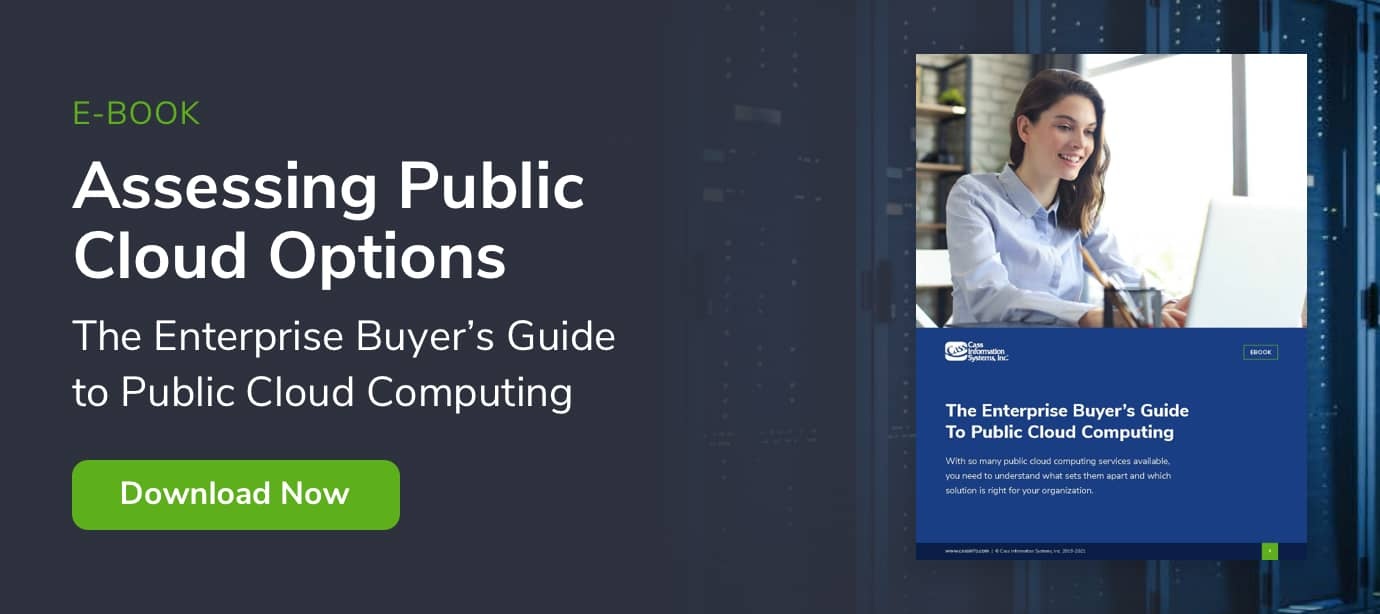With a recent survey finding that, on average, companies waste 35% of their cloud spend, it's no wonder businesses are looking for ways to get their cloud expenditure under control.
What is Cloud Financial Management?
Cloud financial management (CFM) is one of the four key pillars of cloud management services (CMS). Migrating your workloads to the cloud is a great way of saving money, but it raises many questions: Who's paying for it? How much has been bought? How much is being used? CFM is all about enabling you to answer these questions with ease and confidence.
Why is Cloud Financial Management Needed?
Infrastructure as a service (IaaS) invoices are lengthy documents, yet they tend to contain minimal information concerning the instances they’re billing. To compound the issue, the usage files which accompany these invoices can be terabytes in size and require costly, specialized tools to fully fathom.
Put simply, public cloud services are not as transparent with their billing as they should be, and, without a deeper insight, how can you be sure you’re not wasting money paying for cloud resources that are going unused?
You could fritter away resources hiring specialists to try and make sense of your cloud spend situation, or you could invest in a CMS provider to do all the heavy lifting for you. These solutions can interpret, monitor, and elucidate your cloud spend data, giving you back control of your cloud expenditure.
How Does Cloud Financial Management Work?
There are three key methods employed by CMS providers to better manage your cloud finances.
1. Invoice Verification and Allocation
It's important to ensure you're only paying for the cloud resources you actually use. CMS solutions can verify your IaaS invoices to check they match up with the data contained in the detailed usage files. They can then implement fair charge-back based on your tailored methodologies.
A machine-readable ERP allocation charge-back file can then be created and sent back to you for ingestion into your ERP system, letting you allocate the IaaS invoices to the correct departments based on consumption rules and requirements.
2. Budget Management
IaaS does indeed cost far less than building on-site data centers, but usage and cost can be difficult to predict. It’s not uncommon for businesses to have a nasty shock at the end of the month when they receive an IaaS bill for the prior month’s usage.
Cloud management service providers can nullify this situation by feeding budget alert data into their monitoring tools and triggering alerts to your project teams when cloud resource consumption reaches 75%, 90%, or any other limit you wish to set. This can be particularly useful in test or prototype environments where cloud resources are allocated a strict budget, and over-runs will lead to budget issues.
3. Show-Back
Your managers need to be provided with adequate information on cloud spend and usage to make informed business decisions. IaaS show-back gives department managers access to easy-to-interpret dashboards and reports, so they can be in no doubt of their IaaS consumption and the charges allocated for their cloud resources.
These detailed dashboards give your managers greater visibility, helping them operate more effectively and responsibly for the resources under their control. Informed managers make better buying decisions and are better able to control over-consumption of cloud resources, driving down costs overall.
Cloud Financial Management
Cloud financial management is crucial for any business that seeks greater control over, and visibility of, their total IaaS expenditure. Remember the saying, ‘what you can measure, you can manage.’
Of course, cloud financial management is only one piece of the complete cloud management services puzzle. Your cloud needs to be secure, costs need to be optimized, and you must comply with regulatory requirements, too.
Public cloud IaaS is occupying a growing share of annual IT spending for organizations. Infrastructure and operations leaders responsible for IaaS budgets that are expected to grow must manage costs by harnessing cloud service expense management features to eliminate waste. To help you identify the solution that works for you, check out our comprehensive guide.

